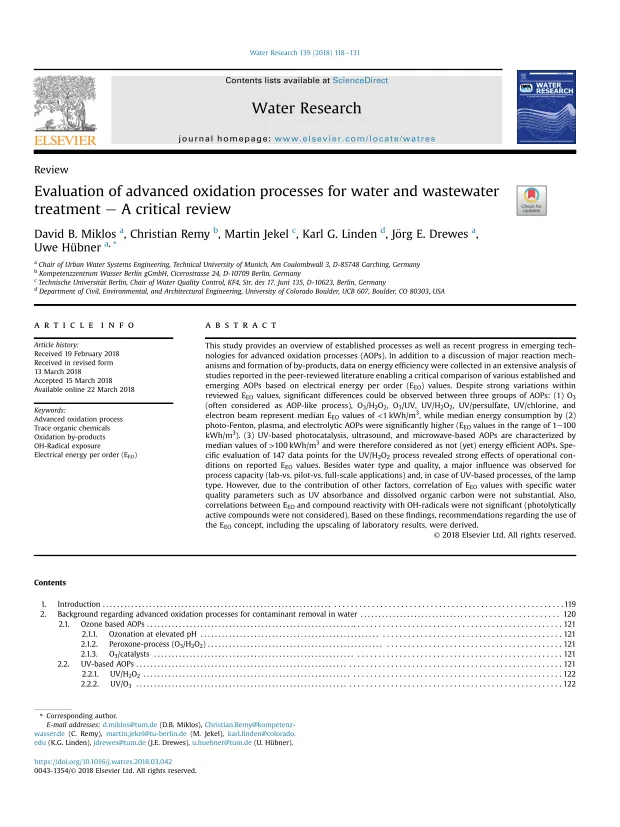This study provides an overview of established processes as well as recent progress in emerging technologies for advanced oxidation processes (AOPs). In addition to a discussion of major reaction mechanisms and formation of by-products, data on energy efficiency were collected in an extensive analysis of studies reported in the peer-reviewed literature enabling a critical comparison of various established and emerging AOPs based on electrical energy per order (EEO) values. Despite strong variations within reviewed EEO values, significant differences could be observed between three groups of AOPs: (1) O3 (often considered as AOP-like process), O3/H2O2, O3/UV, UV/H2O2, UV/persulfate, UV/chlorine, and electron beam represent median EEO values of <1 kWh/m3, while median energy consumption by (2) photo-Fenton, plasma, and electrolytic AOPs were significantly higher (EEO values in the range of 1e100 kWh/m3). (3) UV-based photocatalysis, ultrasound, and microwave-based AOPs are characterized by median values of >100 kWh/m3 and were therefore considered as not (yet) energy efficient AOPs. Specific evaluation of 147 data points for the UV/H2O2 process revealed strong effects of operational conditions on reported EEO values. Besides water type and quality, a major influence was observed for process capacity (lab-vs. pilot-vs. full-scale applications) and, in case of UV-based processes, of the lamp type. However, due to the contribution of other factors, correlation of EEO values with specific water quality parameters such as UV absorbance and dissolved organic carbon were not substantial. Also, correlations between EEO and compound reactivity with OH-radicals were not significant (photolytically active compounds were not considered). Based on these findings, recommendations regarding the use of the EEO concept, including the upscaling of laboratory results, were derived.
